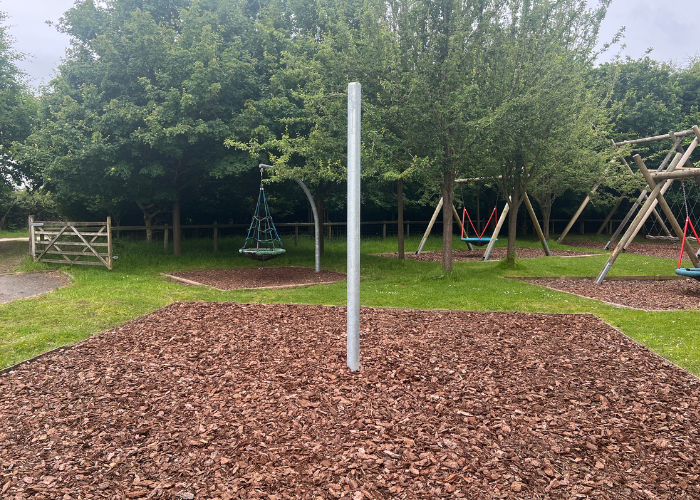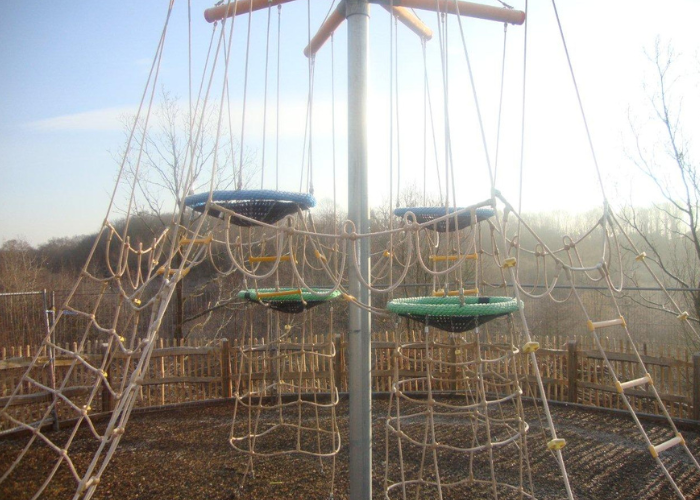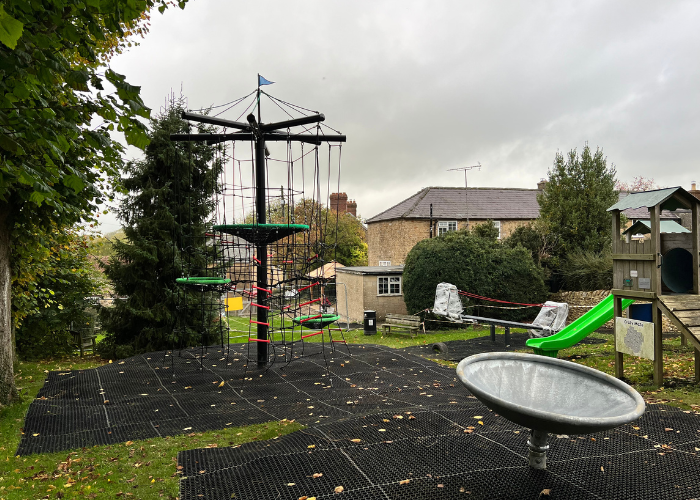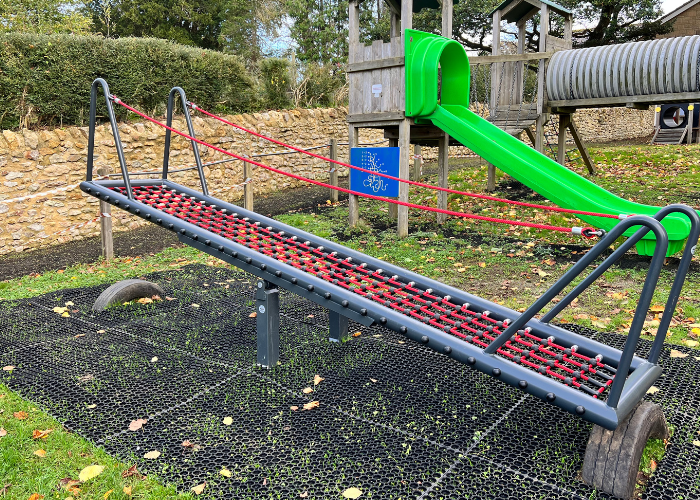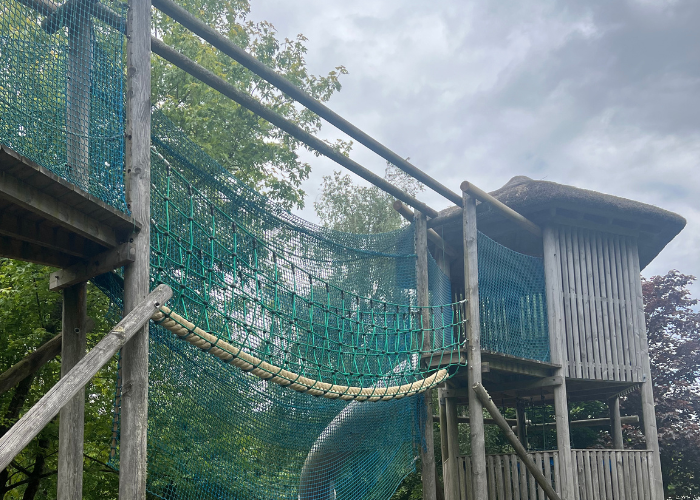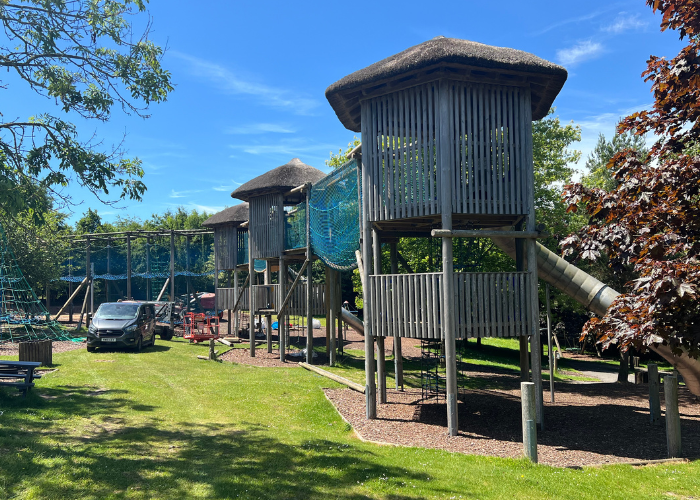Play Safety: Protecting Your Playground During Winter
Keeping playgrounds safe during icy winter weather is essential to ensure play safety for children without the risk of injury. While fun and engagement are important aspects of playground design, safety becomes even more critical in cold conditions.
Ice and snow introduce unique hazards, making it crucial to take extra precautions to maintain a safe play environment for everyone during the winter months.
At Huck Play, we're committed to providing playgrounds that promote physical activity and creativity while prioritising safety. Contact our team today to find out how we can make your playground safe and fun!
Here are some of our strategies and tips to keep your playground safe during the winter months:
Common Problems for Playgrounds During Winter Months
Playgrounds face specific challenges during the icy, wet, and snowy weather of winter months. These conditions can create hazards that compromise the safety of children and increase the risk of accidents.
Here are some things to be wary of when the chill starts to set in…
- Slippery Surfaces: Ice and snow accumulation on playground surfaces can create slippery conditions, increasing the risk of slips, trips, and falls.
- Frozen Equipment: Low temperatures can cause playground equipment, such as metal slides or swings, to become extremely cold, potentially making it uncomfortable or unsafe for children to use.
- Reduced Visibility: Snowfall and winter weather conditions can reduce visibility, making it harder to detect potential hazards or obstacles on the playground.
- Limited Access: Accumulated snow or ice can block or hinder access to certain areas of the playground, making it difficult for children to navigate safely.
- Icy Pathways: Pathways leading to and within the playground area can become icy and pose a slipping hazard for both children and adults.
Addressing these challenges and implementing appropriate measures to mitigate the risks associated with icy, wet, and snowy weather conditions is essential to ensuring playground safety during winter. We’ll share our top tips for winter playground safety below.
7 Tips to Ensure Safety in Playgrounds During Winter
Taking a proactive approach to play safety during winter is key to keeping children and other users safe when the weather conditions make safe play more challenging.
Here are some things you can do as playground management to keep the area safe and functional.
1. Use Rubber or Bark Ground Cover
Poured rubber or bark chippings are great ground cover options for playgrounds, especially during winter. These materials provide a textured and non-slip surface, offering better traction and grip for playground users.
Poured rubber is especially effective in preventing the formation of icy patches, as it’s resistant to freezing and retains its non-slip properties.
Bark chippings, on the other hand, create a natural and absorbent surface, helping prevent the accumulation of ice and providing a safer play environment.
Read More: What is the Best Ground Cover for a Playground?
2. Use Surface De-Icer to Remove Slip Hazards
Using a surface de-icer is another essential measure to maintain a safe playground during winter.
Applying a surface de-icer helps remove ice and reduce slip hazards, ensuring safer ground surfaces, slides, and play equipment. It also helps melt ice and prevent its reformation, providing better traction and reducing the risk of accidents.
3. Use Quality Weather-Proof Play Equipment to Survive Snow & Frost
Cheap or poor-quality playground equipment is likely to fall victim to the harsh winter weather, causing damage and posing safety hazards.
With equipment made from weather-proof materials, the chances of damage due to snow or frost are significantly reduced. Look for equipment made from durable materials such as stainless steel, plastic, or powder-coated metal, as these are less likely to rust or wear down in harsh weather conditions.
Here at Huck Play, our play equipment is manufactured using all of these materials, ensuring the best chance of surviving winter weather and your playground coming out the other side looking fresh and new.
By investing in quality rope play products, like our Eagles Nest Tree or Climbing Glasses, you can keep your playground open and accessible throughout the winter season, allowing children to continue their active play and exploration.
Browse Our Rope Play Equipment
4. Cordon Off Equipment Unsafe During Ice & Snow
When winter weather hits hard, keeping kids safe should be the top priority. If ice or snow builds up, it’s a good idea to block off any play equipment or areas that could become dangerous.
Take trampolines, for example. Jumping on a frozen trampoline might sound like a blast to kids, but it comes with plenty of risks – like slipping, tripping, or dealing with brittle, icy equipment.
A quick inspection of the playground can go a long way. If you spot any risky areas, restrict access until things thaw out and it’s safe to play again!
5. Remove Moss & Dirt Build-up for Safer Flooring
Regularly removing moss and jet-washing dirt build-up will make it much less likely for children to slip and fall on outdoor flooring. At the best of times, moss and dirt can create a slippery surface, but during winter months, when they are wet or frozen, the risk increases significantly.
Your designated playground supervisor should have a schedule in place for regular cleaning and maintenance of outdoor flooring. This can include using a power washer to remove any moss or dirt build-up, as well as sweeping and raking to keep the surface clean and free of debris.
Read More: Why is Playground Cleaning Important?
It's important to also regularly check for any cracks or uneven surfaces on the playground flooring. These can be potential tripping hazards and should be repaired immediately.
6. Clear Snow Manually
Clearing fresh snowfall off your playground equipment in winter is super important. By removing it, you keep the equipment in good shape and avoid damage from heavy snow or frost – especially on things like rope equipment.
Taking a little time to do this helps your playground last longer, saves you repair costs, and reduces the risk of injuries and accidents!
7. Check the Condition of Any Surrounding Grass
Keeping an eye on the grass around your playground is super important in winter. If it gets too muddy or slippery, you can take action before it becomes a problem.
Simple fixes like adding extra surfacing or temporarily closing off certain spots can make a big difference. Whether it’s laying down some hay or restricting access to muddy areas, staying on top of things helps the playground stay safe and fun for kids all season long.
How to Teach Children About Winter Playground Safety
While it is first and foremost your responsibility for keeping the playground safe, the children using the playground should still be educated on how to have fun while staying safe during the winter months.
In schools, this can be facilitated by teachers through lessons and discussions about winter playground safety.
Public playgrounds may be a little more challenging, but signs could be put up around the play area with image instructions on safe winter play. Notices could also be posted in local community groups, like on Facebook, to remind parents and children about winter playground safety or to let them know of the playground’s conditions.
Some of the tips to follow when playing on a winter playground include:
-
Always wear appropriate winter gear, such as boots with good grip and gloves to keep hands warm.
-
Avoid running on icy surfaces and stick to designated walkways.
-
Do not climb on equipment covered in snow or ice.
-
Use caution when sliding down slides or other surfaces, as they may be slippery.
-
Report any hazardous conditions, such as broken or icy equipment, to a teacher or playground supervisor.
-
Don’t wear scarves or clothing with long strings that can get caught in equipment.
In addition, schools can also implement measures such as having designated "snow days" where outdoor play is not allowed due to hazardous weather conditions.
For public playgrounds, think about when is appropriate to shut off the playground entirely, such as during a heavy snowstorm or extreme cold temperatures.
Follow Huck Play’s Expert Advice for Safe Playgrounds
The Huck Play blog is packed with helpful tips to keep your playground equipment safe and in great shape.
From dealing with harsh weather to spotting potential hazards like icy surfaces or broken equipment, we’ve got you covered. You’ll also find advice on maintaining your playgrounds to keep everyone safe.
Whether you’re looking after a school playground or a community park, our blog is your go-to guide for creating a fun and secure space for kids to play. Check it out and keep your playgrounds safe year-round!
FAQs
When Should a Playground Be Closed in Winter Weather?
Playgrounds should be closed in winter weather conditions that pose safety risks, such as heavy snowfall, icy surfaces, or extreme cold temperatures. These conditions can increase the likelihood of accidents, slips, and injuries.
Can Children Play on a Wet Playground?
Children should avoid playing on a wet playground as it can lead to slippery surfaces, increasing the risk of falls and injuries. Ensure the equipment is dry and safe before allowing children to play. Safety first!
How Do You Stop Children from Playing on Equipment in Winter?
To stop children from playing on equipment in winter, ensure clear signage indicating closure, install physical barriers, and inform parents and guardians about the risks. Additionally, regularly inspect the site to prevent access and hazards.
What Are Some Play Safety Precautions?
Play safety precautions include ensuring equipment meets safety standards, regular inspections, adult supervision, teaching children about safe equipment use, and installing shock-absorbing surfaces to minimise injury risks in case of falls or accidents.
What is Play Safety Week?
Play Safety Week is an annual event dedicated to promoting awareness and education about playground safety. It aims to inform parents, children, and educators about the best practices for safe play, ensuring playground environments remain secure and enjoyable for everyone.


